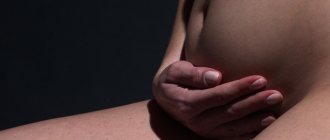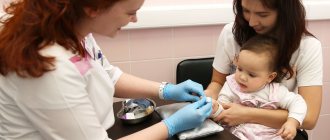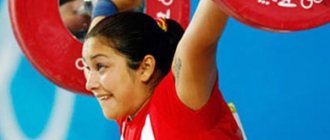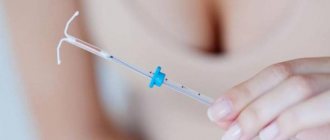Immediately after giving birth, a woman faces not only problems in feeding her baby, but also in a completely “polished” process - going to the toilet. Moreover, difficulties extend to both the process of defecation and urination. What is the cause of the presented troubles and how to go to the toilet after childbirth - gynecologists give recommendations to women even during pregnancy, most of which are simply not followed. It turns out that young mothers themselves are to blame for difficulties with going to the toilet.
First of all, you should reconsider your diet, which for a woman in labor is significantly different from the usual and previously habitual one. In the future, it is important to maintain regularity - daily bowel movements will prevent the development of constipation and other intestinal problems. However, troubles often lurk when going to the toilet when going to the toilet - a woman faces similar difficulties even in the maternity hospital. Here there is pain during urination due to sutures, and the development of infection as a result of failure to maintain proper hygiene.
As a precaution, gynecologists and obstetricians talk to pregnant women and women who have just given birth, covering the basics and providing detailed instructions. What to do if a young mother had “no time for this”, and now she is forced to suffer and cope with difficulties in going to the toilet on her own? It is necessary to study further the presented instructions and recommendations for prevention.
How to go to the toilet after childbirth, a solution to a delicate problem without drugs
The postpartum period often becomes a real test for a woman. Caring for the baby, constant nervous tension and fatigue are complemented by health problems.
You can often hear young mothers complaining that they cannot go to the toilet. This problem is relevant for approximately 30% of women in labor.
Why this problem occurs and how to avoid it, tricks for normal bowel function.
First visit to the toilet
According to doctors, the first visit to the toilet after the birth of a child should take place immediately after the woman is transferred to the postpartum ward. At this moment, you just need to go to the toilet and empty your bladder to ensure normal uterine contractions.
If you had a caesarean section, you should go to the toilet after childbirth as soon as you recover from anesthesia. If you cannot stand up on your own, you will need to ask for a bedpan and empty your bladder.
In case of complicated childbirth with stitches in the perineum, going to the sanitary room also does not need to be postponed. Walking small in this case is not dangerous.
You don't have to worry about the seams coming apart.
When visiting the toilet, you need to remember about hygiene procedures. Due to the fact that the cervix is open, germs can enter the woman’s body. To avoid this and not encounter complications such as inflammation of the uterus and other organs, after each visit to the sanitary room it is necessary to wash the genitals with warm water and baby soap.
You need to wipe the perineum from front to back so that infections from the anus do not enter the vagina. This rule of wiping after defecation should become a law for every woman and girl, regardless of age. This will help avoid diseases such as cystitis, inflammation of the uterus and appendages.
Difficulty going to the toilet
If in most cases women do not have problems with urination, defecation is difficult for many women in labor. Women in labor complain that it is painful for them to go to the toilet. This problem often occurs after a caesarean section and is most often associated with the fear of stitches coming apart.
Doctors call this condition postpartum constipation.
Today, doctors identify several reasons for the development of postpartum constipation after cesarean section.
- Side effects of anesthesia. Any surgical intervention is performed using local or general anesthesia. Medicines used for pain relief inhibit bowel function. After surgery, women are given a remedy to restore peristalsis, but in some cases constipation still develops.
- Psychological fear of seams coming apart. External stitches after a cesarean section are removed approximately one week after surgery. In this case, a woman may simply be afraid to strain in the toilet.
- Taking iron supplements. If there is severe blood loss during surgery, the woman receives drugs that restore the level of hemoglobin in the blood. These medications can cause constipation and difficulty bowel movements.
- False constipation. This is a condition that women invent for themselves. In the first days after a cesarean section, there may be no need to have a bowel movement. This is true for women who had an enema before giving birth. In this case, the intestines are simply empty, because in the postoperative period you need to follow a strict diet that excludes the consumption of solid foods. If you do not have the urge to have a bowel movement and are not bothered by bloating, stomach pain, or increased gas production, it is quite possible that you simply do not need to go to the toilet yet.
Read also:
The first hours after childbirth: how to behave and what to do
What to do
If you still find it painful to walk after childbirth, you should resort to special medications.
In the first days after childbirth, you can use special suppositories that facilitate bowel movements by softening the intestinal contents. However, the use of these drugs is not recommended for frequent use.
With regular use, they can become addictive and then the problem of constipation will only worsen.
In order to go to the toilet regularly, you need to eat right. Eliminate from your diet all foods that can cause constipation. Drink more fluids. During breastfeeding, a young mother's body loses a lot of fluid.
It needs to be replenished. With the right drinking schedule, constipation will definitely bypass you. Fermented milk products are also very useful for postpartum constipation. Eat small portions, but often.
Provide your intestines with a gentle regime.
If constipation is caused by psychological problems, you just need to relax and think less about the problem. The human body is created in such a way that it removes all waste products without outside help. If your intestines are functioning normally and you are simply afraid of bowel movements, calm down, don’t strain, the day will come and your body will cleanse itself.
Dangerous symptoms
Many women, especially those who have had a cesarean section, do not consult a doctor if they have problems with bowel movements. Of course, the problem of constipation is quite delicate, but you should understand that timely contact with a specialist will help to quickly cure constipation without developing dangerous symptoms.
A visit to the proctologist should not be delayed if the following symptoms appear:
- Blood during bowel movements. The reason for the appearance of blood during bowel movements can be a fissure in the anus or hemorrhoids. These diseases cannot be diagnosed independently, which means it is impossible to cure them yourself. Only a specialist can determine the causes of bleeding and prescribe effective treatment.
- Frequent, unsuccessful urge to defecate. This symptom may indicate the development of a disease such as rectocele. This disease often develops after a difficult birth. At the time of labor, part of the intestine shifts towards the uterus. Further, feces accumulate in this bend, which causes an ineffective urge to go to the toilet. If you consult a doctor in a timely manner, you can cope with the disease using conservative methods.
- The ineffectiveness of diets. If it hurts you to go to the toilet, you do not feel relief after bowel movement, constipation lasts more than 14 days, you need to urgently visit a proctologist. Only a specialist in this case can find out the causes of the disease and prescribe medications that will not harm your baby.
Prevention measures
If you experience difficulties with bowel movements just once, you need to urgently take measures to prevent the development of constipation. To do this, you need not only to eat right and drink plenty of fluids.
A good way to prevent constipation is abdominal massage.
If you do not have stitches, you can retract and inflate your stomach alternately; this exercise will help improve the tone of the intestines and restore elasticity to the abdominal muscles.
Prune decoction is used for constipation in folk medicine. There are many ways to prepare a decoction, but the following recipe is more effective:
Take a prune fruit and rinse with warm boiled water. Pour boiling water over the fruit at the rate of 1 prune per glass of water. Leave the glass with the berries overnight. In the morning, on an empty stomach, you need to eat the fruit and drink water from a glass. This should be done every day. Treatment can be continued until stool normalizes.
To prevent the problem of constipation from confronting you, you need to be prepared for it. Start prevention during pregnancy. Move more, don't sit still. Eat right and drink enough fluids.
If you are afraid to go to the toilet and think it will hurt, calm down. There is no need to endure the urge to defecate, this can only make the situation worse.
The first time you really need to go to the toilet is still in the maternity hospital, this will give you confidence that if complications arise, doctors who monitor the health of women in labor will help you.
(2 votes, result: 5.00 out of 5) Loading…
Source: https://yaposlerodov.ru/roddom/kak-sxodit-v-tualet.html
Prevention measures
If you experience difficulties with bowel movements just once, you need to urgently take measures to prevent the development of constipation. To do this, you need not only to eat right and drink plenty of fluids. A good way to prevent constipation is abdominal massage. If you do not have stitches, you can retract and inflate your stomach alternately; this exercise will help improve the tone of the intestines and restore elasticity to the abdominal muscles.
Prune decoction is used for constipation in folk medicine. There are many ways to prepare a decoction, but the following recipe is more effective:
Take a prune fruit and rinse with warm boiled water. Pour boiling water over the fruit at the rate of 1 prune per glass of water. Leave the glass with the berries overnight. In the morning, on an empty stomach, you need to eat the fruit and drink water from a glass. This should be done every day. Treatment can be continued until stool normalizes.
After the baby is born, a woman faces another problem - going to the toilet. 90% of women are affected by this. Therefore, in this article we will tell you how to go to the toilet without pain and without harming yourself.
How to poop after childbirth? Why can't mom go to the toilet?
Many women, after permission, complain that they cannot go to the toilet. Those who are faced with this disease experience severe psychological and physical discomfort.
To solve the problem, you should have a good understanding of why this situation occurs after childbirth, what constipation can be, and also understand what methods would be best to use in order to have a normal bowel movement.
Causes
After childbirth, constipation occurs due to physiological and mental reasons. Physiological ones include:
- hormonal imbalance;
- abdominal muscle dystrophy;
- perineal ruptures;
- pressure of the uterus on the gastrointestinal tract;
- intestinal dislocation;
- slowing down intestinal contractions;
- poor nutrition;
- congenital gastrointestinal diseases.
Psychological reasons for the lack of stool after childbirth include:
Kinds
There are 3 types in total:
- Spastic.
- Atonic.
- Associated with intestinal pathology such as intestinal elongation.
Spastic appearance
The spastic type is manifested by the following symptoms:
- increased activity of the gastrointestinal tract;
- slow contraction of the intestines;
- feces are excreted in small portions;
- attacks of pain in the left side of the abdomen;
- Possible nausea, fatigue, loss of appetite.
What to do with constipation? This type can be quickly treated with proper nutrition and an established daily routine.
Atonic type
The atonic variant is characterized by:
- decreased gastrointestinal activity;
- slow contraction of the intestines;
- defecation accompanied by pain;
- a large amount of feces;
- Possible aching pain, increased gas formation, nausea, and a feeling of fullness.
This type most often occurs in women who have undergone surgery, as well as in those who eat poorly or have undergone antibiotic therapy. Often, as a result of the disease, a tear or crack in the anus occurs. In this case, surgical intervention is required.
When lengthening
This type of symptoms is very similar to spastic. The reason lies in the fact that feces travel a longer path in which liquid is absorbed from them. As a result, the masses become hard, which prevents their normal exit from the body.
Only a qualified specialist can determine the type and prescribe competent, and most importantly, safe treatment for the mother and her child.
In case of hemorrhoids, this disease requires immediate consultation with a doctor and further therapy.
Read also: Swelling after childbirth: causes and how to get rid of it quickly
Treatment
What to do to avoid making the situation worse? For constipation after childbirth during breastfeeding, treatment depends on whether the mother is breastfeeding her baby; not all laxatives are prescribed, but only those that are safe for the baby. But before resorting to drugs, you can try to solve the problem naturally. Let's look at how to get rid of constipation after childbirth on your own.
Diet
How can diet help? In fact, in most cases the situation is resolved thanks to a balanced diet. Pooping after childbirth will be allowed by including in the daily menu such provisions as:
- natural vegetable oils;
- black bread;
- bran;
- buckwheat and pearl barley.
The best vegetables and fruits are:
- carrot;
- beet;
- zucchini;
- pumpkin;
- cabbage;
- broccoli;
- apples;
- cherries;
- apricots;
- melon.
Compotes made from dried fruits and fermented milk foods will be useful. In addition, you should definitely drink 1.5-2 liters of water per day. An established drinking regime helps to quickly remove waste and toxins from the body. Maybe you will get a good habit of starting every morning with a glass of water. This will reduce the risks of atonic type of disease.
You should limit your use:
- hard cheese;
- rice;
- quinces;
- strawberries;
- pears;
- currants;
- fatty soups.
Say a categorical “no” to foods such as:
- White bread;
- wheat bran;
- semolina;
- legumes;
- tea;
- blueberry;
- walnuts.
A diet following all the tips will help quickly solve the problem. Nursing mothers should choose foods that will not cause an allergic reaction in their children.
Proper nutrition will also help you quickly get your body in shape, have a beautiful appearance, and healthy shiny hair and nails.
Conservative therapy
How to go to the toilet during conservative treatment? The use of laxatives and the use of enemas is provided. You can also use traditional methods of therapy, but only after consulting a doctor. An enema will help you poop after childbirth.
An enema helps:
- increased intestinal contractility;
- softening of feces.
You should perform no more than 4 rinses of the gastrointestinal tract with an enema per day.
The following medications will be safe for a breastfeeding mother and her child:
- Fortrans.
- Duphalac.
- Forlax.
- Lactulose syrup.
Keep in mind that if a mother is breastfeeding and at the same time taking a laxative, the baby may experience colic, since the drug itself will enter his body along with the milk.
In case of a spastic form of the disease, it is forbidden to take medications containing sena or Alexandria leaf, since they will only increase intestinal motility.
An excellent option for women in labor would be glycerin suppositories. They soften feces, and at the same time glycerin is excreted immediately along with the masses, without being absorbed into the blood, which means they pose absolutely no danger to the baby. But there is also a downside: frequently solving a delicate situation in this way can lead to the fact that the gastrointestinal tract stops emptying itself.
ethnoscience
Treatment with traditional methods is famous for its safety and effectiveness, since decoctions consist exclusively of components taken from the natural environment, without any chemical additives.
Infusions of valerian, heather, hawthorn, adonis, lemon balm, and chamomile have a phytoncidal and anti-inflammatory effect, which is very important in therapy. If the disease occurs along with hemorrhoids, it is recommended to make baths from these herbs.
Below are a few herbal medicine recipes. It is better to drink these decoctions warm - this will stimulate lactation, increase the tone of the whole body and strengthen the immune system.
For one tablespoon of gooseberries, use 1 glass of water. The berries are filled with water and boiled for about 10 minutes. The drink is filtered and taken 4 times, about a quarter of a glass. If desired, you can add some dried fruits to the gooseberries.
Pour 2 tablespoons of figs with a glass of boiled milk. Milk can be replaced with boiled water. Take one tablespoon 3-4 times a day. This dried fruit is absolutely safe for infants. Figs are rich in vitamins and microelements necessary for a woman and her child. In addition, it helps you recover faster.
- A decoction of cumin, anise and fennel.
Take 2 tablespoons of each component and pour boiling water. You should drink half a glass half an hour before meals 3 times a day. Ready-made dried herbs can be purchased at the pharmacy. These herbs have a very good effect on lactation, increase energy and give vigor. They help with constipation and relieve stress.
No matter how safe the decoction may seem, it should be taken with caution.
The baby may develop allergies or colic to the composition of the product. To experiment, take one sip of the decoction and observe the child’s reaction. If everything is fine with him, you can continue taking it. But if gastrointestinal disorders, rashes and other negative manifestations of allergies appear, stop using immediately.
Physical activity
To prevent the occurrence of this disease, the body needs physical activity. Exercise improves the contractility of the gastrointestinal tract, tones it, and helps get the body in shape.
But physical exercise is contraindicated for women:
- with elevated temperature;
- with ulcerative colitis;
- those suffering from diarrhea;
- with pathologies of organ systems.
Those who have undergone surgery should consult with their physician to determine the level of individual stress on the body.
Is it possible to feed the baby?
This question is one of those that interests mothers first of all.
If the disease is chronic, problems with gastrointestinal tract disorders may also occur in the child, since toxins from the mother’s body enter the milk, and with it to the child.
If difficulties with going to the toilet are an isolated case, there will be nothing wrong with breastfeeding, but if they are constant, it is better to refuse breastfeeding until the situation is resolved.
We figured out how to go to the toilet after childbirth. Don't let the problem get worse. No matter how much you ignore your body’s alarm bells, so many complications may arise in the future. Remember that the life of a little miracle depends on your emotional and physical state.
Source: https://pervyerody.ru/zdorove/kak-pokakat-posle-rodov-pochemu-mama-ne-mozhet-skhodit.html
Possible complications and how to deal with them
Like any surgical procedure, episiotomy can be accompanied by complications. During childbirth, it can aggravate obstetric trauma or continue with a III-IV degree rupture. This is a serious condition that is accompanied by rupture of the skin, muscles of the perineum, external sphincter of the rectum and its wall. In severe cases, long-term consequences may manifest themselves in the form of a vaginal-rectal fistula.
A seal in the suture after an episiotomy should alert you. Also alarming symptoms are:
- purulent discharge from the suture or genital tract;
- unpleasant odor;
- a sharp increase in pain;
- asymmetry of the labia;
- long-lasting swelling or redness;
- increased body temperature, weakness and malaise;
- problems with urination.
If a woman does not follow the recommendations, she may experience symptoms that the stitch has come apart. In this case, bloody or bloody discharge from the wound appears. When such signs appear, the doctor removes the threads, and the wound heals on its own by secondary intention. Depending on the specific clinical situation, they may resort to re-suturing. A young mother may notice that the stitch is bleeding after discharge from the hospital. You should contact your gynecologist for medical help.
Inflammation of a postoperative wound is accompanied by swelling and severe pain. When suppuration occurs, it is opened, washed with antiseptic solutions, and drained. The woman in labor is prescribed antibiotics to suppress the infection.
Some doctors recommend applying napkins with Levomekol ointment to the seam to improve healing.
How to treat stitches after episiotomy at home?
It is enough to continue using the same drugs that were prescribed in the maternity hospital.
Asymmetry of the perineum, bulging in the suture area can be symptoms of a hematoma. Treatment depends on its size and rate of formation. Small hematomas are treated conservatively with antibiotics. If a large vessel is damaged, the hematoma quickly increases in size, symptoms of anemia appear, and surgical treatment is necessary. The wound is opened, the bleeding vessel is bandaged or stitched. The woman is also prescribed intramuscular antibiotics.
Long-term consequences of episiotomy include dyspareunia – pain that occurs during sexual intercourse. Sexual rest is recommended for up to 6 weeks after childbirth with a perineal incision. But unpleasant sensations can bother a woman for up to 3-6 months. To alleviate the condition, you need to choose poses in which the sensations are not so painful.
When can you play sports?
After just 2 weeks, you can perform simple general strengthening exercises to improve your overall well-being after childbirth. After 2 months, if you feel normal, begin fitness or gymnastics classes in groups for beginners, gradually increasing the load.
How to go to the toilet after childbirth?
Almost every woman, after giving birth to a child, experiences fear, discomfort, psychological problems and other difficulties with the toilet, because going to the toilet after childbirth is not only scary, but also quite painful.
The problem with the toilet after childbirth is a separate issue that certainly deserves attention, because for some women the process called “going big after childbirth” is equated almost to childbirth itself.
Therefore, let's take a closer look at this topic, find out all the main reasons why it hurts to poop after childbirth, and also analyze all the ways to go to the toilet after childbirth without experiencing pain and without provoking other serious consequences for your own health.
Why do toilet problems occur after childbirth?
If it hurts to poop after childbirth or when a young mother begins to notice that she is pooping with blood after childbirth, the reason most often lies in postpartum tears and surgical sutures placed on them or in the appearance of postpartum hemorrhoids.
How to poop after childbirth? - a particularly difficult problem to solve for those, as already mentioned, who are faced with hemorrhoids or postpartum sutures.
If a woman is faced with both of these problems at the same time, then the task becomes significantly more difficult, but not impossible.
The optimal solution would be to prepare the perineum for the onset of labor, and begin treating hemorrhoids during pregnancy, but if it’s too late to talk about this, then you should start making a decision based on the situation.
“Why do I poop blood after childbirth?” - a frequently asked question among women in labor. You won’t have to look for an answer for long, because blood during bowel movements after childbirth is a consequence of a hemorrhoidal fissure.
Toilet after childbirth: hemorrhoids and constipation
Constipation after childbirth is the second most difficult problem to solve for women who have recently given birth. Often, after giving birth, a young mother is haunted by the feeling of fear that the stitches will definitely come apart during a trip to the toilet.
In this case, the problem lies precisely in the psychological suppression of the natural need to empty. The consequence is the accumulation and compaction of feces, which provokes the formation of constipation.
In addition to this, after childbirth, the abdominal muscles are often unable to perform fastening and squeezing functions, and the intestines also function poorly.
To solve the problem of postpartum constipation, you first need to overcome your fear of the toilet, and also follow the following recommendations:
- Try not to be nervous, don't worry. Everyone knows how the intestines are able to react to our psycho-emotional state. Some thoughts make you immediately run to the toilet, while others, on the contrary, tend to cause prolonged constipation.
- Eat as much fiber as possible: eat fresh vegetables and fruits. Prunes and other dried fruits help a lot. If you have a desire to add bran to your daily diet, then you should definitely consult your doctor first and together with him choose the optimal amount per day. In addition, the doctor must recommend the amount of liquid, because bran must be washed down well. It is forbidden to consume chocolate, as it tends to lead to even greater constipation.
- In order to completely get rid of postpartum constipation, try to drink more water (or other acceptable liquid). Make it a rule to drink a glass of warm water every morning on an empty stomach. Throughout the day it will be useful to consume a decoction of prunes or dried fruits.
- Try to be mobile. During movements, our internal organs begin to involuntarily massage the intestines, which helps to improve its functioning.
- Go to the toilet in large quantities even at the slightest urge. This must be done even while breastfeeding or as soon as the desire to visit the toilet arises. You need to know that if you hold back the urge, the next one may come only after a few days, which will, again, lead to the formation of constipation.
- You should not push while sitting on the toilet, because such actions can lead to the appearance of hemorrhoids. As a last resort, you can try an enema. Also, under the supervision of a doctor, you can start taking special laxative medications, the lactation period for which is not a contraindication.
How to go to the toilet after childbirth?
First of all, if you have stitches, hemorrhoids, or a tendency toward constipation during or after pregnancy, then you should not overuse fasting foods. For example, do not pounce on baked goods, which are often served in maternity hospital canteens.
Secondly, toileting after childbirth appropriately involves the use of glycerin suppositories or the drug Duphalac. These products will ensure that you do not have to strain while you are on the toilet.
If a woman suffers from hemorrhoids, then it would be advisable to use suppositories for this disease.
In addition to using medications, it is also recommended to take care of a special diet that can help prevent constipation.
Another difficult problem associated with going to the toilet after childbirth is the formation of gas in the intestines. Gases, just like feces and urine, prevent uterine contractions during childbirth.
To prevent this problem, you should follow the following four rules:
- Eliminate from your diet foods that provoke the formation of gases in the intestines (fresh grapes or raisins, brown bread, dairy products, legumes), and also lead to colic in the child.
- For preventative purposes, brew and drink tea from dill or fennel seeds. In this case, you will not only prevent the formation of gases in your intestines, but also prevent the occurrence of colic in your baby.
- If gases still begin to bother you, then, after consulting with your doctor, you can start taking Espumisan.
- When neither suppositories with glycerin nor dill decoction help, then most likely the matter lies in the psychological aspect. Regardless of how the baby is born (cesarean, with tears, with incisions, or naturally), a woman almost always finds it difficult to poop after childbirth. In order to eliminate the possibility of complications, it is best to first use “natural” methods of cleansing the intestines:
- in the morning, eat oatmeal cooked in water;
- In the evening, consume kefir with prunes.
In turn, doctors additionally recommend trying to move as much as possible, even if it is difficult for a pregnant woman to do so. It is the movements that help restore contractions of the smooth muscles of the internal organs and help well in solving the problems described above.
August 21st, 2020 by anna
Source: https://krasivaya24.com/kak-sxodit-v-tualet-posle-rodov/
Are there ways to avoid an episiotomy?
In order to reduce the risk of the need for surgical dissection of the perineum, a woman, first of all, needs to perform an exercise to increase the elasticity of the perineal tissue before childbirth. This is especially true for women giving birth for the first time after 35 years.
Perineal massage is also an effective method. It is performed regularly 2-3 times a week and lasts 5 minutes, starting from the 36th week.
The expectant mother should know how childbirth takes place. This will give you an idea of the upcoming event and will help you behave correctly during contractions and pushing.
How to go to the toilet after childbirth with stitches?
A woman’s body prepares for childbirth in advance; usually, shortly before this, her appetite decreases and, accordingly, the need to go to the toilet.
During the process of childbirth, when the fetus leaves the birth canal, a significant amount of feces is squeezed out of the intestines, which is why for some time after the birth of the child the woman does not feel the urge to visit the toilet; this break is especially favorable for those who have sutures during childbirth or hemorrhoids.
Women begin to worry about how to go to the toilet in a big way after giving birth with stitches a little later. For many, the task is aggravated by the presence of concomitant diseases such as hemorrhoids, a tendency to constipation, and others. The use of laxatives is permissible only on the recommendation of a doctor.
First visit to the toilet after childbirth ↑
One of the ways to go to the toilet in a big way after childbirth with stitches and a rupture of the perineum is to take a wet napkin, fold it in layers several times and firmly, but painlessly, apply it to the perineum. Such support is important so that the seams do not come apart, the woman is more confident and calmly does her job.
If it doesn’t work out right away, it’s better to postpone this matter, but not for too long so that you don’t have to resort to more radical methods.
With prolonged abstinence, feces become compacted, driven deep inside, and it becomes more and more difficult to get them out. And since the abdominal muscles are stretched, it becomes increasingly difficult for the intestines to fulfill their role.
Therefore, doctors recommend running to the toilet in a big way at the first urge, even if the baby is feeding at this time. Otherwise, you can wait a long time for the next calls.
If you have hemorrhoids, you should not eat bread immediately after giving birth - it contributes to constipation. A woman should not be very nervous and worried, because this also causes a delay in bowel movements.
For existing hemorrhoids, relief, duphalac or sea buckthorn suppositories are used. Diet is especially important in the postpartum period.
To avoid gas and colic, your child should not drink carbonated drinks and completely avoid grapes, legumes and rye bread. Gases are almost always an integral part of hemorrhoids.
If it is not possible to get rid of them, then the drug espumizan is used as a last resort. Sometimes doctors prescribe enemas, but they do it once and in extreme cases.
Difficulty going to the toilet after childbirth ↑
The problem of constipation after childbirth often occurs because after childbirth, intestinal tone decreases due to relaxed abdominal muscles. Other causes may include difficult childbirth, large blood loss, the use of painkillers or those containing iron, or the use of obstetric forceps.
Another important point about how to go to the toilet in a big way after childbirth with stitches and hemorrhoids is that when emptying the intestines, you should not make strong attempts, everything should happen calmly and without tension.
In addition, it is aggravated by the present psychological fear of the woman herself and her fear of tearing the stitches or disturbing the hemorrhoids. But here the body again shows miracles of adaptation in extreme conditions: during the process of natural childbirth in women, the nerves of the perineum are slightly “muffled”, pain sensitivity is significantly reduced.
The changed hormonal background helps soften the stool and, even if the woman in labor had problems with stool before childbirth, she will most likely get rid of it after it. Breastfeeding promotes the production of the hormone oxytocin, which activates the intestines and, if a woman responds to the urge in time, defecation occurs painlessly and gently.
What to do? How to go? ↑
When a woman tries to relieve herself, there are some tricks on how to go to the toilet in a big way after giving birth with stitches. Even the posture of the emptying process itself matters. For the greatest comfort, it is better, while sitting on the toilet, to place some object such as a stool or box under your feet, and rest your elbows on your knees - in this position the rectum is in the most relaxed state.
If you suspect an anal fissure, you should immediately consult a specialist.
If nothing helps and the woman feels it is difficult to go to the toilet after childbirth with stitches, and the suspicion falls on constipation, then you can try to get rid of it with the help of special exercises, for example, “vacuum”.
In a lying position on a hard surface, it is as if all the contents from the abdomen are inhaled into the chest. When you inhale deeply, the ribs should move apart, and when you exhale, do your best not to let them come together again, trying to spread them even wider. The stomach seems to “go” under the ribs.
Repeat this several times. In addition to solving the problem with stool, this exercise has a powerful healing effect: after childbirth, the abdominal organs will return to their original position, blood supply to existing hemorrhoids will improve, and the pelvic floor muscles will receive the desired relaxation.
Among other things, the “vacuum” exercise will help restore a woman’s flat stomach.
When bowel movements are delayed, it is useful to walk a lot, but do not overwork, do not sit on the toilet for a long time and do not strain.
We should also not forget about the diet of the woman in labor, this is the key to health - for her and the newborn. Pay special attention to drinking plenty of fluids: at least 250-300 ml of liquid in the morning, up to 10 glasses during the day. It is very good to include juices with the pulp of plums, apricots, tomatoes and add a few drops of any vegetable oil to them. You should drink such juices in the morning and before bed.
Eat fresh, non-mealy vegetables (without starch), non-astringent fruits - prunes, dried fruits, apricots, apples. The fiber in whole grain cereals and bran also promotes regular bowel movements in the postpartum period. But after eating them, you need to drink enough liquid. To avoid constipation in the postpartum period, you must completely avoid chocolate.
In combination with all of the above measures, doctors highlight the particular importance of physical activity, it helps restore relaxed abdominal muscles, strengthen intestinal tone and the kilograms gained during pregnancy.
Even if it’s difficult to move at first, you still need to find the strength to gradually increase the load, only in this way can you recover from childbirth and go to the toilet without any problems after childbirth with stitches and complications.
Source: https://kidbe.ru/3476-kak-sxodit-v-tualet-po-bolshomu-posle-rodov-so-shvami.html
Episiotomy technique
The incision is made only in the second stage of labor at the maximum of one of the attempts. The perineum is treated with an antiseptic. Local anesthesia is not always performed. When there is a threatening rupture of the perineum, the tissues are bloodless and stretched, so the incision does not cause acute pain. If anesthesia is necessary, it is performed infiltratively using a lidocaine solution.
Dissection of the perineum is performed using scissors. While the woman is resting from pushing, one jaw is carefully inserted between the presenting part of the fetus and the tissues of the perineum in the direction of the future incision. After the start of the next contraction, the woman in labor pushes, the tissues are stretched as much as possible. At this point, an incision is made.
Its length is determined intuitively, but it must be at least 3 cm. A “gentle” short incision will not provide the necessary expansion of the vaginal outlet and can provoke further tissue rupture.
If an episiotomy was performed during childbirth, a suture (raffia) is performed after the birth of the placenta and examination of the cervix for ruptures. If no anesthesia was performed at the time of the incision, then infiltrative anesthesia is performed before suturing.
Various techniques are used to restore the integrity of the perineum:
- Perineorrhaphy according to Shuta involves placing figure-of-eight sutures through all layers of tissue. Non-absorbable suture material is used. After the wound has healed, the threads are removed. The disadvantage of this method is frequent infection and inflammation of the sutures.
- Layer-by-layer suturing of the perineum begins with the mucous membrane of the posterior vaginal wall. The cut muscles are then connected using immersion sutures. In this case, synthetic absorbable threads are used. Catgut is not recommended for use due to the large number of allergic reactions. A continuous cosmetic suture is applied to the skin.
At the end of the manipulation, the sutured wound is treated with an antiseptic.
How to go to the toilet after an episiotomy - All about pregnancy
Almost every woman, after giving birth to a child, experiences fear, discomfort, psychological problems and other difficulties with the toilet, because going to the toilet after childbirth is not only scary, but also quite painful.
The problem with the toilet after childbirth is a separate issue that certainly deserves attention, because for some women the process called “going big after childbirth” is equated almost to childbirth itself.
Therefore, let's take a closer look at this topic, find out all the main reasons why it hurts to poop after childbirth, and also analyze all the ways to go to the toilet after childbirth without experiencing pain and without provoking other serious consequences for your own health.
Indications for episiotomy
Episiotomy is not performed on all women, but only in the following cases:
- Breech presentation of the fetus;
- Increased risk of arbitrary perineal ruptures;
- Fruit weighing more than 4000 grams;
- Oxygen starvation of the fetus;
- Muscle rigidity (increased muscle tone accompanied by painful sensations) of the perineum;
- “High” perineum (a distance of more than 2.5 cm between the vagina and the woman’s anus);
- Dystocia of the fetal shoulders (delay of one or both shoulders of the fetus in the woman’s pelvis a minute after the appearance of the head);
- Multiple pregnancy (twins, triplets, etc.);
- As preparation for surgical obstetric intervention during childbirth;
- The need to shorten the second stage of labor;
- Increased risk of birth injury to the fetus;
- A woman is not able to push hard enough for the fetus to come out physiologically;
- Development of preeclampsia (severe form of gestosis) during childbirth or worsening of an existing one;
- Premature birth.
There are no contraindications to episiotomy. This surgical intervention affects the fetus only in a positive way, preventing possible complications.
“Does a woman have pain during an episiotomy? The obstetrician-gynecologist cuts the perineum during contractions, so the expectant mother does not feel any additional pain. However, during suturing, after the birth of the baby, local anesthesia may be necessary.”
Anatomical rationale
Episiotomy is a dissection of the perineal tissue in the second stage of labor. The anatomical structure of the perineum allows you to make a neat surgical incision to prevent tissue rupture and the formation of a laceration. Healing during surgery occurs faster, with the formation of a neat, unnoticeable scar. In case of spontaneous rupture, the direction of the wound is unknown; it can lead to prolapse and prolapse of the pelvic organs, and massive bleeding.
The structure of the perineum is such that the incision can be made in two directions, without damaging the neurovascular bundles or large muscles. If the incision is directed from the vagina to the anus, then it is a perineotomy, or median episiotomy. Another option is a mid-lateral episiotomy. A purely lateral incision is used very rarely, because wounds heal worse after it, and the risk of damage to the Bartholin gland is increased.
The difference between perineotomy and episiotomy is in the direction of the incision. In the latter case, it is performed along an imaginary line connecting the posterior commissure of the vagina with the right ischial tuberosity. This direction is preferable due to the location of the vessels and nerves of the perineum.
When to apply stitches and causes of ruptures
Childbirth does not always go smoothly, and sometimes you have to pay for the happiness of having children with birth injuries - tears and cuts in the genital tract, which are covered with external and internal sutures after childbirth. Injuries can be internal - ruptures in the cervix and vagina, and external - ruptures and cuts in the perineum.
After a natural birth, the obstetrician must check for ruptures and, if detected, they are sutured. Otherwise, if suturing is not carried out, the postpartum period threatens to end in a hospital bed due to bleeding in the injured tissues and the addition of infection to them, and in the future even provoke prolapse of internal organs and urinary and fecal incontinence.
The process of applying external and internal sutures takes a long time and requires high qualifications of the doctor, and in the case of ruptures in the cervix that extend to the vagina and uterus, and some virtuosity due to the inaccessibility and danger of damage to the nearby bladder and ureters.
Internal sutures after childbirth on the cervix, vagina and uterus itself are applied using absorbable threads made of biological or semi-synthetic material. If only the cervix is affected, then anesthesia is usually not required - after childbirth it is insensitive. In all other cases, local or general anesthesia is used - anesthesia or epidural anesthesia.
The muscle layers in case of ruptures and cuts of the perineum are also sutured with absorbable threads, and the skin is often made of non-absorbable silk, nylon and other materials, which are removed in the maternity hospital or in the antenatal clinic, usually 3-7 days after childbirth, when the suture is scarred. The procedure is quite painful and therefore anesthesia is required.
The reasons for ruptures can be different. This includes not following the advice of the obstetrician during the pushing period, and the presence of scars from sutures placed in previous births (the scar consists of inelastic connective tissue), rapid, prolonged, premature and instrumental births (application of forceps), anatomical features of the pelvic structure, a large head in a child, breech presentation, low skin elasticity at the time of birth.
Is it possible for a mother to take Suprastin while breastfeeding and how can this affect the baby?
Obstetricians have different attitudes toward episiotomy—dissection of the perineum. For some, this is a routine procedure that is performed en masse to avoid the risk of perineal rupture. Other doctors strive for the most natural course of the birth process, intervening when it is already quite obvious that a rupture cannot be avoided. If instrumental delivery is performed with forceps or a vacuum extractor, then preliminary dissection of the perineum is recommended.
Episiotomy does not help prevent third-degree tears when the anal sphincter is involved in the violation of the perineal integrity and may even contribute to such injury. Still, surgical dissection has a number of advantages over rupture. Dissected tissues are technically easier to repair than torn ones. The resulting wound has smooth edges, healing occurs faster and a more aesthetic scar is formed.











